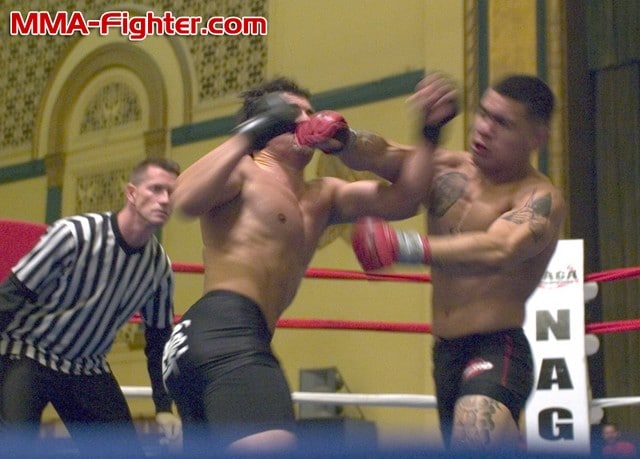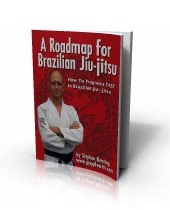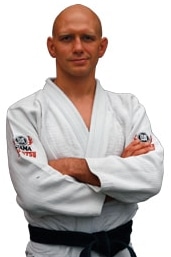
I’ve received lots of email recently, so today I thought I’d dip into the mailbag and share a few emails. I’ve also quickly jotted down some quick comments, and some links to a few relevant articles.
****** A READER WRITES ******
Hello Stephan
I just wanted to tell you that I placed second place in the Senior Class at the Pan Ams No Gi and second in the Absolute division.
It was my first competition. I applied alot of your training principles so I wanted to thank you for everything!!!!!
Frank Soto
~~~~~~ MY COMMENTS ~~~~~~
Thanks Frank, and congratulations on your performance!! I hoped that you learned lots by competing.
You mentioned using training principles… I’ve been and advocate for principle-based training for a long time and really believe one concept is worth a thousand techniques.
Along those lines, have you seen Erik Paulson’s article “10 Principles to Prepare for Battle” that you can download for free from Grapplearts? It’s a very cool and informative document!
****** A READER WRITES ******
Hi Stephan,
About the video that you recently posted on Facebook: Is grappling and BJJ useful for self defense? Yes, it’s definitely very useful. I completely agree here.
But does the UFC favour striking? Well, your points are definitely valuable but I would like to add arguments why it actually favours grapplers.
Strikers are forced to strike `non-dangerous` areas. Which, to me, is like trying to apply a choke on the forehead or a joint lock on a body part that has no joint.
You want to strike where it is the most effective. Examples: back of the head after a failed takedown attempt. Front kick/stomp to knee.
Some other MMA organizations allow more strikes, like the old Pride FC. They allowed stomps, soccer kicks and knees to the head of a downed opponent. This makes a failed takedown attempt much more dangerous. (You can still see Wanderlei or Shogun having to suppress this tendency in their UFC fights.)
Also groin kicks, can be very effective. I think there are more types of strikes banned than types of locks and chokes.
To wrap things up. Grappling and striking go hand in hand into any fight. You need both, and both are fun to train.
Please keep posting those great videos of you, as I learn a lot (I also like that they are short and to the point).
Kind Regards,
F.S.
~~~~~~ MY COMMENTS ~~~~~~
Hi F.S. Well first off, I think we agree on a lot of things.
And thank you for keeping the conversation civil even through we disagree on a few points. That means I won’t have to challenge you to crossed swords at dawn!
I watched a lot of Pride FC before that MMA organization went under – there were some really exciting match-ups, weren’t there?
And yes, Pride gave their strikers a lot more leeway when it came to striking a downed opponent, although the lack of elbows meant that ground and pound was a little less effective too. (Btw, here’s former Pride fighter Denis Kang talking about how to throw elbows on the ground).
Click here to view the same Denis Kang video on YouTube!
I haven’t done the exact math, but I seem to remember a lot more submissions in the old Pride FC fights than in today’s UFC, despite the supposedly ‘more deadly’ strikes allowed in Pride.
If you got rid of judges and referees in MMA, locked fighters into a cage and didn’t open the doors until one of them gave up (or was unconscious) then most fights would be decided on the ground! It’s a sport, I get that, but it’s important to recognize that there are a lot of rules shaping the sport, currently biasing it towards striking.
But lets talk about self defense for a moment.
I’m not saying that rolling around on the ground in an alleyway is a good idea, but YOU OFTEN DON’T GET A CHOICE IN WHETHER TO GO TO THE GROUND OR NOT!
You could trip, get tackled, get knocked down, get blindsided, etc., and if that happens to you then you’d better be prepared for it.
And going to the ground against your will happens a LOT (if you don’t believe me then check out the next letter…).
Ultimately, the genius of grappling is that you can train frequently and almost at full-force.
Because you can spar against heavy resistance, you get really good at dealing with heavy resistance. And being able to perform your skills under pressure is incredibly important for self defense.
To illustrate this concept, let’s assume for a minute that the groin kick IS the ultimate weapon…
Well in order to add the groin kick to your repertoire and make it effective you’re going to need to train it against resisting opponents, i.e. people who are doing everything they can not to let you kick them in the groin, while trying their very best to kick you in the groin themselves.
How many training partners are there who will let you kick them in the groin full force? And how many times a year could you train this way?
Not very many…
By contrast, grappling allows me to REALLY try to choke you, and you REALLY try to resist me, and the result is that we BOTH get really good at attacking and defending.
****** A READER WRITES ******
Hey Stephan,
I just watched the Facebook video on grappling, self defense and MMA, and as usual I agree with you. As someone who has been a NYC police officer for 14 years I can tell you that every use of force type incident I had went to the ground.
I should also point out that unlike a scheduled fight the most likely scenario on the street is a bigger vs smaller opponent and of course that goes back to Helio Gracies notion of BJJ being for the smaller, weaker guy against the brute. I do not really watch the UFC much (I prefer the WEC, seems to be more submissions) but I agree with your comments.
By the way – just to let you know – thanks to you and your help after over 2 years of bjj my claustrophobia issue is almost non existant. Thanks for that!!
Now that I feel better with claustrophobia and bjj my next project is the adrenaline dump from competition and for me I feel exposure will be the best agent for that just like it was for claustrophobia.
Thanks and be well.
M.D.
~~~~~~ MY COMMENTS ~~~~~~
Wow. Every use of force incident in your 14 years on the job ended up on the ground! Well if that isn’t an incentive to take the time and make the effort to get good at this grappling stuff (fast) then I don’t know what is. Thanks for contributing that to the conversation!!
And congratulations on making headway on your claustrophobia issues – that’s huge!
I don’t have problems with that myself, but I talk to enough people to know that it affects a large number of grapplers. And I totally respect those people who’re trying to come to terms with it.
Incidentally there are more than 400 articles, blog posts and tips on Grapplearts. Wanna guess which one I get the most feedback about? It’s this one:
https://www.grapplearts.com/Grappling-BJJ-Claustrophobia.html
So help me get the word out about that article: send the link to someone you know who is bravely working their way through claustrophobic sensations while studying BJJ, MMA or submission grappling.


